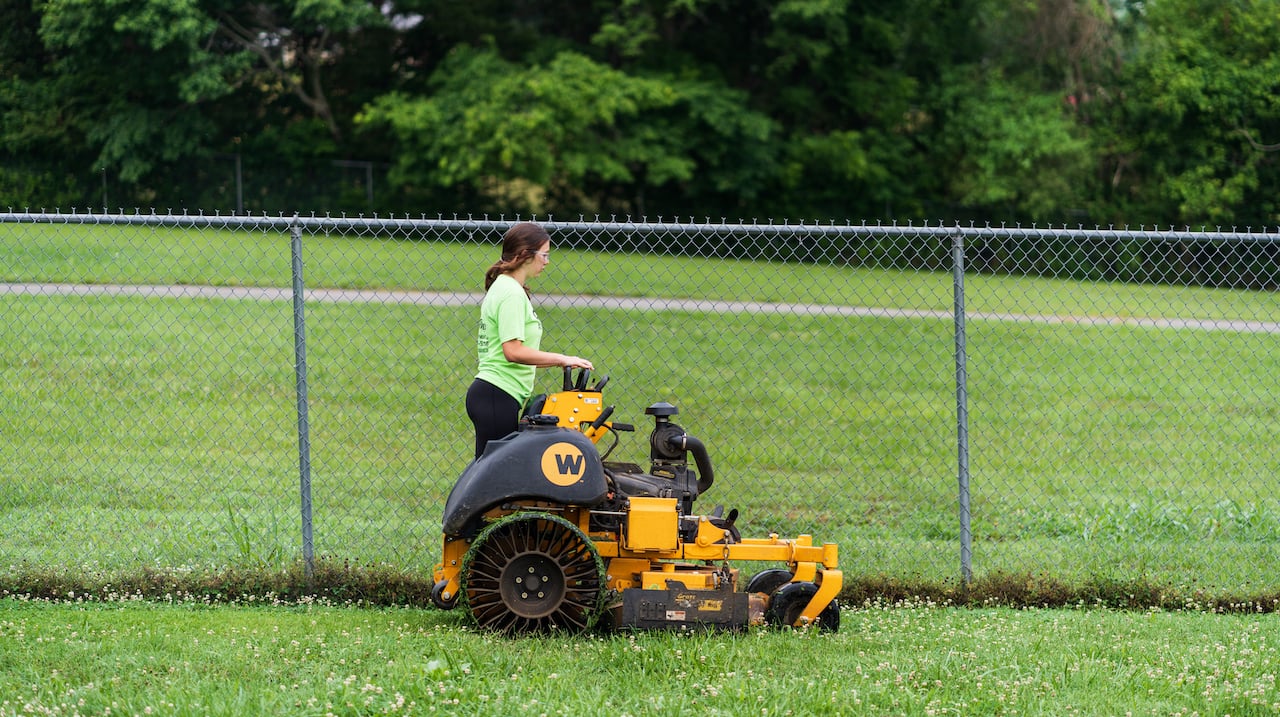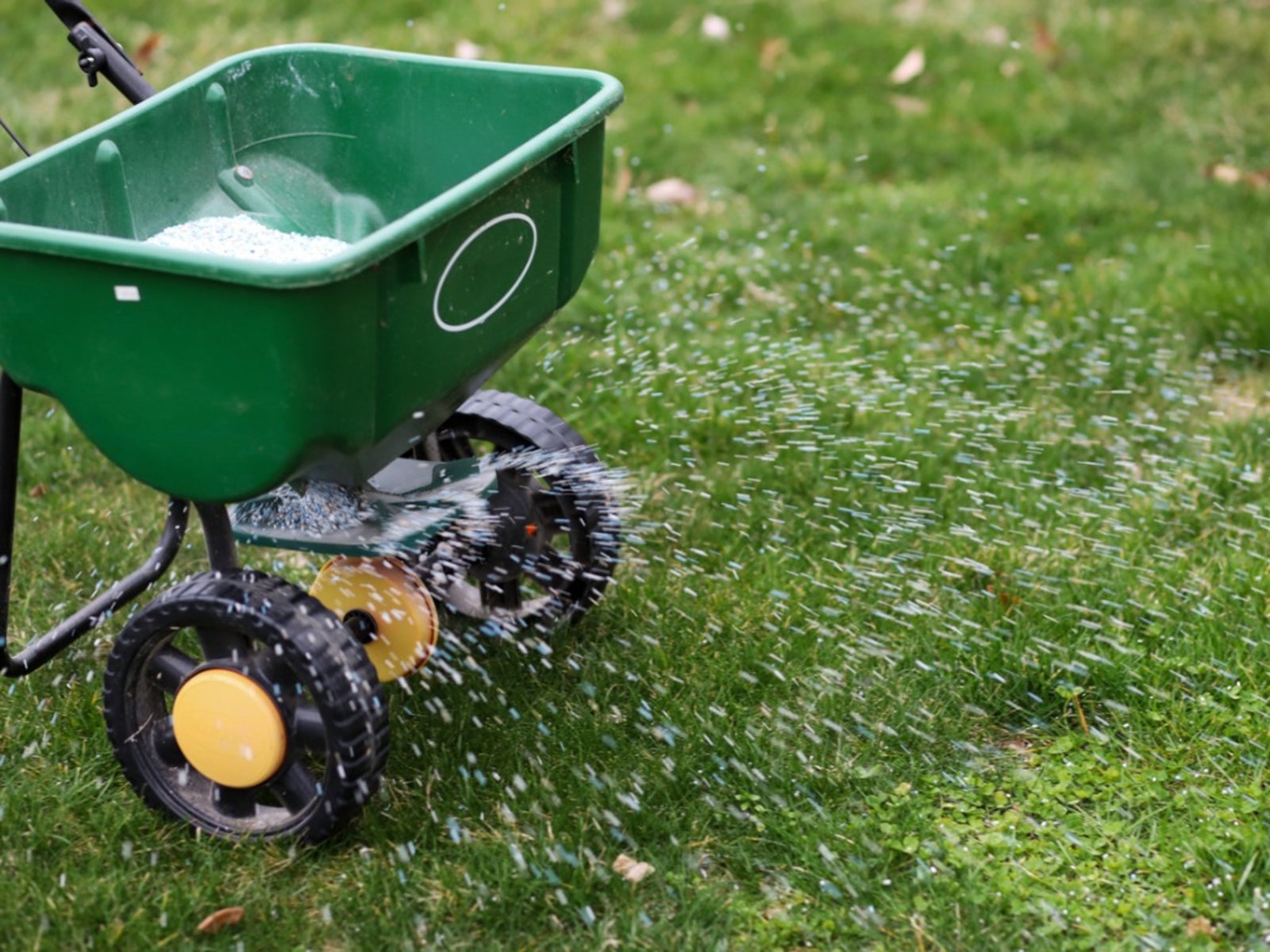Home>Garden Essentials>How To Price Lawn Care Jobs


Garden Essentials
How To Price Lawn Care Jobs
Modified: September 1, 2024
Looking for tips on how to price lawn care jobs for your garden? Discover expert advice and strategies to ensure fair and profitable pricing in this comprehensive guide.
(Many of the links in this article redirect to a specific reviewed product. Your purchase of these products through affiliate links helps to generate commission for Storables.com, at no extra cost. Learn more)
Introduction
When it comes to pricing lawn care jobs, finding the right balance can be a challenging task. As a homeowner or a professional gardener, determining how much to charge for your services is crucial to attracting clients and generating revenue. However, pricing your lawn care jobs too high can drive potential customers away, while pricing them too low may undermine your profitability.
In this article, we will explore the various factors to consider when determining the price for your lawn care jobs. From evaluating the cost of supplies and equipment to analyzing labor and overhead expenses, we will guide you through the process of setting competitive and profitable prices for your services.
Let’s dive in and discover the key considerations that will help you price your lawn care jobs effectively.
Key Takeaways:
- Pricing lawn care jobs requires considering factors like lawn size, services requested, and market conditions to ensure fair prices and profitability.
- Regularly adjusting prices based on market demand, costs, and customer feedback is crucial for a successful lawn care business.
Read more: How To Price A Job In Construction
Factors to Consider
When it comes to pricing lawn care jobs, it’s important to take a comprehensive approach and consider a range of factors that can impact the final price. By carefully evaluating these factors, you can ensure that your prices reflect the true value of your services while remaining competitive in the market.
Here are some key factors to consider:
- Size and complexity of the lawn: The size of the lawn is a fundamental factor that influences the amount of time and effort required for maintenance. Larger lawns may require more equipment, labor, and time, which could justify a higher price. Additionally, the complexity of the lawn, such as the presence of slopes, obstacles, or intricate landscaping, can affect the difficulty level of the job and impact the pricing.
- Type of services requested: Different clients may have varying lawn care needs. Some may require basic services such as mowing, edging, and trimming, while others may request additional services like fertilization, pest control, or weed removal. Offering a range of services and pricing them accordingly allows you to cater to different customer preferences while maximizing your revenue.
- Frequency of service: Consider whether the client requires one-time service or regular maintenance. Offering discounted rates for long-term contracts can incentivize customers to choose your services consistently, enhancing client loyalty and providing a steady income stream.
- Local market conditions: Conducting market research to analyze the prices offered by competitors in your area is essential for setting competitive rates. If the market is saturated with lawn care providers, you may need to adjust your pricing strategy to attract customers without sacrificing profitability.
- Seasonal fluctuations: The demand for lawn care services often fluctuates with the changing seasons. During peak seasons, such as spring and summer, demand may increase, and you may be able to charge higher prices. However, during slower seasons, it may be necessary to offer promotions or adjust your pricing to maintain a consistent flow of customers.
By carefully considering these factors, you can establish a pricing structure that aligns with the unique needs of your clients and optimizes your business’s profitability.
Cost of Supplies and Equipment
When pricing lawn care jobs, it is crucial to take into account the cost of supplies and equipment. This includes items such as fertilizers, pesticides, seeds, gardening tools, and machinery necessary to perform the services.
To accurately determine the cost of supplies and equipment, consider the following:
- Purchasing Costs: Research and compare prices for the supplies and equipment you need. Look for deals and discounts from suppliers or consider buying in bulk to lower your costs. Keep track of your inventory and factor in replenishment costs as well.
- Maintenance and Repair Costs: Tools and machinery require regular maintenance, servicing, and occasional repairs. Take these additional costs into consideration when setting your prices to ensure that you can cover these expenses and maintain the longevity of your equipment.
- Depreciation: Equipment and machinery depreciate over time. It’s essential to calculate the depreciation rate and incorporate it into your pricing model. This ensures that you are not only covering the initial cost of the equipment but also setting aside funds for future replacements.
- Waste and Losses: Some supplies may go to waste or be lost during the course of your work. This can include spilled fertilizer or damaged tools. Anticipate these losses and factor them into your calculations to avoid potential profit loss.
- Industry Trends: Stay informed about the latest trends in lawn care supplies and equipment. New technologies or more efficient tools may emerge that can enhance productivity or reduce costs. Embracing these innovations can help you stay ahead of the competition and maintain a competitive pricing strategy.
By carefully evaluating the cost of supplies and equipment, you can ensure that you are covering your expenses while still maintaining a fair and competitive price for your lawn care services.
Labor Costs
When pricing lawn care jobs, labor costs play a significant role in determining the overall price. Labor costs include the wages of your employees or your own labor if you are a sole proprietor. It is important to factor in this expense to ensure that you are compensating your workforce appropriately and maintaining a profitable business.
To calculate labor costs effectively, consider the following:
- Hourly Wage: Determine the hourly wage for your employees based on their experience, qualifications, and local industry standards. It’s important to strike a balance between offering competitive wages to attract skilled workers and ensuring that your labor costs don’t exceed your revenue.
- Estimated Time per Job: Assess the average amount of time it takes to complete different lawn care tasks. This can include mowing, trimming, edging, and other services. Consider the size and complexity of the job and use historical data or time trials to estimate the labor hours required for each project.
- Overtime and Additional Labor Costs: Account for overtime wages if your employees work beyond the standard working hours. Also, factor in additional labor costs, such as hiring temporary workers for peak seasons or subcontracting specialized tasks like tree pruning or irrigation system maintenance.
- Efficiency and Productivity: Assess the efficiency and productivity of your workforce. If certain individuals or teams consistently complete jobs at a faster rate without compromising quality, you may consider adjusting their wages accordingly. Recognizing and rewarding high-performing employees can motivate them and improve overall productivity.
- Training and Development: Include the costs associated with training and developing your employees’ skills. Investing in continuous training programs can enhance their abilities, leading to improved efficiency and higher-quality service. These costs should be factored into the labor component of your pricing model.
By accurately accounting for labor costs, you can ensure that you are compensating your workforce fairly while maintaining a profitable pricing structure for your lawn care services.
Overhead Expenses
When pricing lawn care jobs, it’s essential to consider the overhead expenses associated with running your business. Overhead expenses are the costs incurred to operate and maintain your business, excluding direct labor and supplies.
To accurately determine overhead expenses, consider the following:
- Administrative Costs: This includes expenses related to office space, utilities, office supplies, insurance, and software subscriptions. Calculate the monthly or annual costs of these essential business operations and allocate a portion of these expenses to each lawn care job.
- Vehicle Expenses: If you use vehicles for transporting equipment or traveling to job sites, factor in costs such as fuel, maintenance, insurance, and vehicle depreciation. Calculate the average monthly expenses associated with your vehicles and divide them among your jobs accordingly.
- Marketing and Advertising: Include the costs of marketing and advertising your lawn care services. This can include website maintenance, online advertising, print materials, and any fees associated with listing your business in directories or hiring a marketing agency. Distribute these costs across your jobs to account for the promotion of your services.
- Licensing and Certification: Depending on your location, you may need to obtain licenses or certifications to legally operate your lawn care business. Include the costs associated with obtaining and renewing these licenses in your pricing structure.
- Professional Fees: If you hire accountants or lawyers for financial and legal services, ensure that these expenses are considered when determining the price of your lawn care jobs. These professionals play a crucial role in managing your business’s financial health and compliance.
- Contingency and Profit Margin: Set aside a portion of your earnings as a contingency fund to cover unexpected expenses or emergencies. Additionally, allocate a profit margin to ensure that your business remains profitable and sustainable in the long run.
By properly accounting for overhead expenses, you can ensure that your prices accurately reflect the true cost of running your lawn care business beyond direct labor and supplies.
Read more: How To Estimate Lawn Care Pricing
Market and Competitive Analysis
Understanding the market and analyzing your competition is essential when pricing your lawn care jobs. Conducting a thorough market analysis allows you to gain insights into customer demand, pricing trends, and competitive offerings. This information enables you to position your business effectively and set competitive prices that resonate with your target market.
Here are key steps to conducting a market and competitive analysis:
- Identify Your Target Market: Determine your ideal customer base. Consider factors like location, demographics, and specific needs or preferences. This will help you tailor your pricing strategy and services to appeal to your target market.
- Research Competitors: Identify other lawn care businesses operating in your area. Study their pricing models, service offerings, and reputation. Look for unique differentiators and identify any gaps or opportunities that you can capitalize on.
- Analyze Pricing Strategies: Examine the pricing strategies used by your competitors. Are they positioned as budget-friendly options or premium services? Evaluate how your services compare in terms of quality, expertise, and value. Determine whether you want to position yourself as a high-end provider or offer more affordable options.
- Consider Additional Value: Look for ways to differentiate your services and provide additional value to customers. This can include offering personalized consultations, eco-friendly practices, or specialized expertise in specific lawn care areas. Assess the value these unique offerings bring and use them to justify your pricing structure.
- Solicit Customer Feedback: Engage with your existing customers and seek feedback on their satisfaction levels with your pricing and services. Use this information to refine your pricing strategy and make necessary adjustments to enhance customer perception and loyalty.
By conducting a comprehensive market and competitive analysis, you can position your lawn care business effectively in the market, set competitive prices, and attract and retain customers in a sustainable manner.
When pricing lawn care jobs, consider factors such as the size of the lawn, the services required, and the local market rates. It’s important to factor in your costs and desired profit margin to set a competitive yet profitable price.
Pricing Strategies
When it comes to pricing your lawn care jobs, various strategies can help you achieve your business goals while meeting the needs of your customers. Choosing the right pricing strategy involves considering factors such as market demand, competition, customer preferences, and profitability.
Here are some common pricing strategies that you can consider:
- Market-Based Pricing: This strategy involves setting prices based on the current market conditions and the prices offered by competitors. It helps ensure that your prices are aligned with industry standards and appeal to customers who are familiar with prevailing rates in your area.
- Cost-Plus Pricing: With this strategy, you calculate your costs (including labor, supplies, overheads) and add a predetermined profit margin. This approach ensures that you cover your expenses while generating a reasonable profit. However, it’s important to periodically review and adjust your costs to maintain competitiveness.
- Value-Based Pricing: This strategy involves pricing your services based on the perceived value you provide to customers. Consider the unique benefits, convenience, and expertise you offer compared to competitors. By positioning your services as high-value and charging accordingly, you attract customers who are willing to pay for quality.
- Package Pricing: Instead of charging for individual services, you can offer bundled packages at different price points. This strategy allows customers to choose a package that suits their needs and budget while increasing your revenue potential.
- Seasonal Pricing: Adjusting your prices based on seasonal demand can help you maximize profit during peak periods. For example, you might charge higher prices during the spring and summer when lawn care needs are at their highest. However, it’s important to remain competitive and avoid overpricing during slower seasons.
Remember, the right pricing strategy may vary depending on your target market, competition, and business goals. It’s essential to regularly review and adjust your pricing strategy based on market trends, customer feedback, and your business’s financial performance.
By selecting a pricing strategy that suits your business and customer preferences, you can optimize your prices to attract customers, generate revenue, and maintain profitability in the long term.
Estimating and Quoting
Estimating and quoting accurately is crucial for both you and your customers. Providing accurate estimates builds trust with potential clients and ensures that you are pricing your lawn care jobs in a way that covers your costs and generates profit.
Here are some tips to help you effectively estimate and quote your lawn care jobs:
- Visit the Site: Before providing an estimate, visit the client’s property to assess the work required. Take note of the lawn size, condition, any specific requests, and potential challenges such as slopes or obstacles. This on-site evaluation allows for a more accurate estimation.
- Break Down the Services: Clearly define the specific services you will provide and their associated costs. Itemize the tasks, such as mowing, edging, trimming, fertilization, and any additional services like weed control, to provide transparency in your quotation.
- Consider Time and Effort: Estimate the amount of time each task will take based on the size and complexity of the lawn. Factor in the number of workers and their productivity levels to calculate the labor costs and ensure efficient use of resources.
- Include Material Costs: Determine the cost of supplies and materials needed for each job, such as fertilizers, seeds, and pesticides. Add these costs to your estimate to provide a comprehensive quote to the customer.
- Account for Overhead Expenses: Incorporate your overhead expenses, including administrative costs, vehicle expenses, marketing expenses, and any other fixed costs, into your estimation. This ensures that your price covers all aspects of running your business.
- Consider Profitability: Set a reasonable profit margin to ensure that your business remains financially sustainable. Consider the level of competition, market demand, and the value you provide to determine an appropriate profit margin for each job.
- Provide Clear and Detailed Quotes: Communicate your pricing to customers in a clear and transparent manner. Break down the costs of each service, specify any terms or conditions, and outline the scope of work. This helps customers understand what they are paying for and builds trust in your professionalism.
Regularly reviewing and updating your estimation and quoting process based on customer feedback and the performance of your business allows you to refine your pricing strategy and optimize profitability.
Remember, providing accurate estimates and transparent quotes is key to establishing trust with your customers and ensuring that your lawn care jobs are priced fairly and competitively.
Adjusting Prices
Adjusting prices is a necessary and strategic aspect of running a successful lawn care business. It allows you to adapt to changes in the market, manage costs, and remain competitive while ensuring your profitability. Regularly reviewing and adjusting your prices helps keep your business sustainable and responsive to the needs of your customers.
Here are some key factors to consider when adjusting prices:
- Market Demand and Competition: Stay informed about market trends, customer demands, and the strategies employed by your competitors. If you notice a shift in customer preferences or increasing competition, you may need to adjust your prices to remain attractive and win new customers.
- Cost of Supplies and Labor: Fluctuations in the cost of supplies, such as fertilizers, pesticides, and equipment, can impact your expenses. Similarly, changes in labor costs, including wages and benefits, can affect your bottom line. Regularly evaluate these costs and adjust your prices accordingly to maintain profitability.
- Seasonal Demand: Different seasons may experience varying levels of demand for lawn care services. During peak seasons when demand is high, you may consider adjusting your prices to account for increased service volume and to capitalize on the higher market demand. During slower seasons, offering promotions or discounted rates can help attract clients and maintain a steady revenue stream.
- Value-Added Services or Upgrades: Introducing new services or upgrades can justify price adjustments. If you enhance the quality of your services, provide additional value, or offer innovative solutions, it can justify higher prices. Communicate the benefits of these value-added services to your customers to ensure they understand and appreciate the increased value they receive.
- Customer Feedback and Satisfaction: Pay attention to customer feedback regarding your pricing. If you consistently receive feedback that your prices are too high or too low, it may be necessary to reassess and adjust accordingly. Strive to maintain a good balance between customer satisfaction and profitability.
- Profitability and Financial Health: Regularly assess the financial health of your business and monitor your profitability. If your revenues are not sufficient to cover expenses and generate a reasonable profit, adjusting your prices becomes essential to ensure the sustainability of your business.
Remember, adjusting prices should be done thoughtfully and strategically. Keep track of any price adjustments and regularly review their impact on your business’s financial performance. Strive to strike a balance between meeting customer needs, staying competitive, and maintaining profitability to ensure the long-term success of your lawn care business.
Tracking and Reviewing Pricing
Tracking and reviewing your pricing is an essential part of managing your lawn care business effectively. Regularly monitoring and evaluating your pricing strategy allows you to make data-driven decisions, optimize your profitability, and ensure that your prices remain competitive in the market.
Here are some key steps to track and review your pricing:
- Maintain Price Records: Keep a record of your prices for different services, customers, and time periods. This allows you to track how your pricing has evolved and assess the impact of any adjustments you have made.
- Monitor Market Conditions: Stay informed about the market conditions, such as changes in demand, competition, and industry trends. This information helps you gauge the overall pricing landscape and evaluate whether your prices are aligned with the market conditions.
- Analyze Customer Feedback: Pay attention to customer feedback and comments regarding your pricing. Listen to your customers’ perspectives and take note of any common concerns or suggestions. This feedback can provide insights into how your pricing is perceived and guide you in making necessary adjustments.
- Review Financial Performance: Regularly review your financial performance, including revenue, costs, and profitability. Assess whether your pricing is generating the desired level of profit and meeting your business goals. Identify any areas where adjustments may be necessary to enhance your financial performance.
- Compare Competitor Prices: Continuously monitor the pricing strategies of your competitors. Compare their prices to your own to gauge your competitiveness in the market. If you find significant discrepancies, evaluate whether adjustments are required to maintain a competitive edge.
- Test and Analyze Pricing Experiments: Occasionally experiment with different pricing strategies, such as offering discounts, promotions, or bundled packages. Track the results of these experiments and analyze the impact on your sales, customer satisfaction, and profitability. This data-driven approach helps you make informed decisions about your pricing strategy.
- Stay Flexible and Adaptive: Pricing is not a one-time decision. Be prepared to adapt and adjust your prices as needed. Stay attentive to market dynamics, customer demands, and the performance of your business, and make changes accordingly to optimize your pricing strategy.
By actively tracking and reviewing your pricing, you can ensure that your lawn care business remains competitive, profitable, and responsive to the needs of your customers. Regular analysis and adjustments are key to achieving long-term success in the ever-evolving market.
Conclusion
Pricing lawn care jobs requires careful consideration of various factors to ensure that you strike the right balance between profitability and customer satisfaction. By taking into account the cost of supplies and equipment, labor, overhead expenses, market conditions, and competition, you can develop a pricing strategy that reflects the value you provide while remaining competitive in the market.
Throughout this article, we have explored the importance of accurately estimating and quoting, as well as the need to periodically adjust prices based on market demand, costs, and profitability. By tracking and reviewing your pricing, you can make data-driven decisions that optimize your financial performance and ensure a sustainable business model.
Remember that pricing is not a static process. It requires continuous monitoring, analysis, and adaptation to stay in line with market trends and customer needs. Regularly reviewing your pricing strategy, seeking customer feedback, and staying informed about industry developments allows you to make timely adjustments and maintain a competitive edge.
Setting the right prices for your lawn care jobs is a delicate balance, but with the right approach and a focus on delivering value to your customers, you can build a thriving and profitable lawn care business. By combining your gardening expertise with a strategic approach to pricing, you not only attract and retain satisfied customers but also position yourself as a trusted and reliable provider in the industry.
Remember, pricing is just one aspect of your overall business strategy. Providing exceptional service, building strong customer relationships, and continually improving your skills and knowledge are equally important for long-term success.
Now armed with this knowledge, go ahead and set your lawn care prices confidently, knowing that you have considered all the vital factors. Keep honing your pricing strategy as you learn and grow, and watch your lawn care business flourish!
Frequently Asked Questions about How To Price Lawn Care Jobs
Was this page helpful?
At Storables.com, we guarantee accurate and reliable information. Our content, validated by Expert Board Contributors, is crafted following stringent Editorial Policies. We're committed to providing you with well-researched, expert-backed insights for all your informational needs.














0 thoughts on “How To Price Lawn Care Jobs”